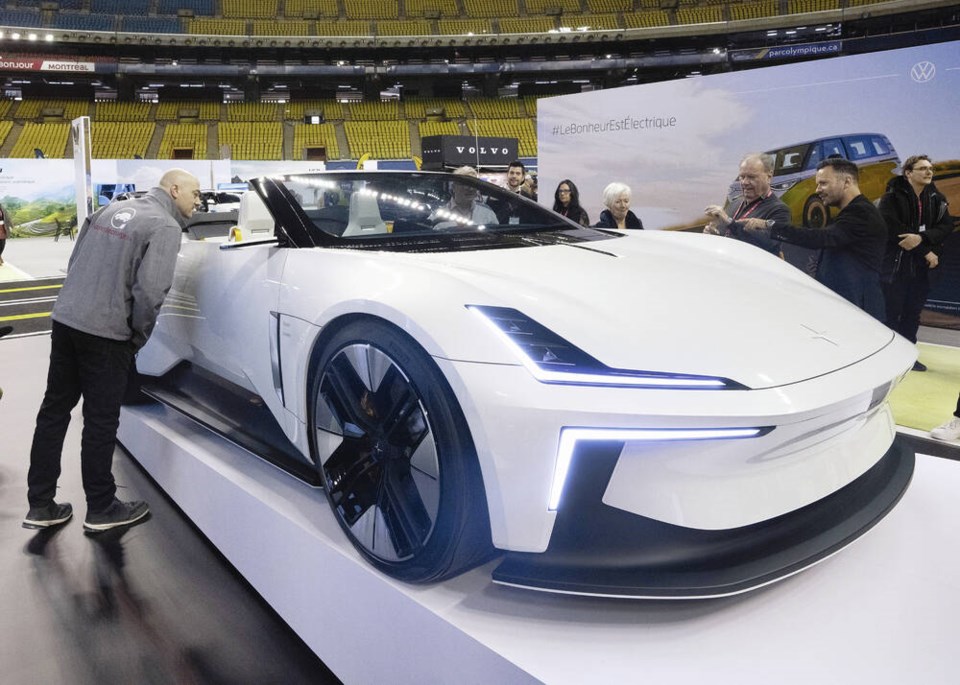A commentary by a retired business leader who lives in Victoria.
The federal government has mandated that all new light-duty vehicles be electric by 2035. Achieving that goal would require vastly more electrical generation capacity and an enormous expansion of charging stations.
A Fraser Institute study published in March found that handling the higher load would require either 13 large new gas plants or the equivalent of 10 new mega-dams the size of B.C.’s $16-billion Site C.
Just one problem: Almost all viable hydro sites have already been dammed. Plus, it took 10 years to get environmental approval for Site C and another 10 to build it. That leaves the natural gas plants. But powering EVs with natural gas puts the kibosh on zero emissions.
The cost of building and operating 13 new gas plants would be enormous. Who would pay for them? It’s virtually impossible to separate power billing by source, so they would need to be rolled into existing electricity rates.
That would increase costs for Canadian businesses, many of which are already struggling. And it might even lead inflation-weary citizens to take to the streets, either with or without their trucks.
The only alternative would be huge nationwide power subsidies in a country that’s already carrying a massive national debt.
And then there are the direct EV subsidies to consider. The federal government provides a $5,000 subsidy for every EV purchased in Canada. And powering up all these new EVs, if people do buy them, would require a major expansion of charging stations.
Here again, taxpayers are riding to the rescue with the $680-million “Zero Emission Vehicle Infrastructure Program” — this after the federal government has already spent more than a billion dollars “to make EVs more affordable and chargers more accessible for Canadians.”
Adding to the taxpayer largesse, a new electric vehicle supply chain incentive provides a 30 per cent tax credit for vehicle assembly, battery production and acquisition of materials (e.g., lithium, cobalt and manganese) used in the cathodes that make batteries work. It was designed for Honda’s recently announced $15-billion plant but also applies to other new projects.
If your head isn’t already spinning trying to comprehend the massive scale of consumer and taxpayer largesse to the EV industry, there’s another huge subsidy to think about: free road use.
We reprehensible drivers of gasoline and diesel vehicles pay a lot in fuel taxes. The Canadian Taxpayers Federation’s 2022 Gas Tax Honesty Report shows Canadian drivers pay an average of 55 cents per litre in gasoline taxes.
Combining that information with Statistics Canada data showing total consumption of 42.5 billion litres means Canadian drivers paid over $23 billion in road-use taxes. Meanwhile, EV drivers pay nothing.
Quite apart from the obvious unfairness, Ottawa’s EV mandate would gradually remove gasoline and diesel vehicles from the road. When they’re gone, who’s going to pay to maintain the roads for all those EVs to travel on?
Finally, the bottom-line question: Will this big shift to electric vehicles have any environmental benefit? An International Energy Agency study shows that to meet international EV pledges the world will need no fewer than 388 new lithium, nickel and cobalt mines.
But the time between regulatory application to actual production ranges from six to nine years for lithium and 13 to 18 years for nickel. And 2035 is only 11 years away.
What about the human cost of all those mines?
Most rare-earth minerals are found in developing countries, fully half in Africa, where reports of child labour and other human rights abuses are all too common.
A team of researchers centred at Northwestern University examined the impact of cobalt mining in the Democratic Republic of Congo and found it had “dire effects on human well-being.”
The answer to the question “Will the shift to electric vehicles have any net environmental benefit?” is therefore clearly no. And the human cost of trying to meet the EV targets will be profoundly negative.
Those factors alone make it highly unlikely Ottawa’s ban on gasoline vehicles will actually happen.
But the biggest reason it will fail is that people don’t want it. As I write this, there are new reports of EV sales collapsing despite both subsidies from governments and price-slashing from firms.
Governments are discovering, to their dismay and citizens’ relief, that, as Adam Smith himself put it in his 1759 book The Theory of Moral Sentiments, “people are not chess pieces to be moved around by a hand from above.”
Note to readers: This opinion piece has been corrected. A previous version gave an incorrect number for the Statistics Canada data on fuel consumption. It is 42.5 billion litres.
>>> To comment on this article, write a letter to the editor: [email protected]



